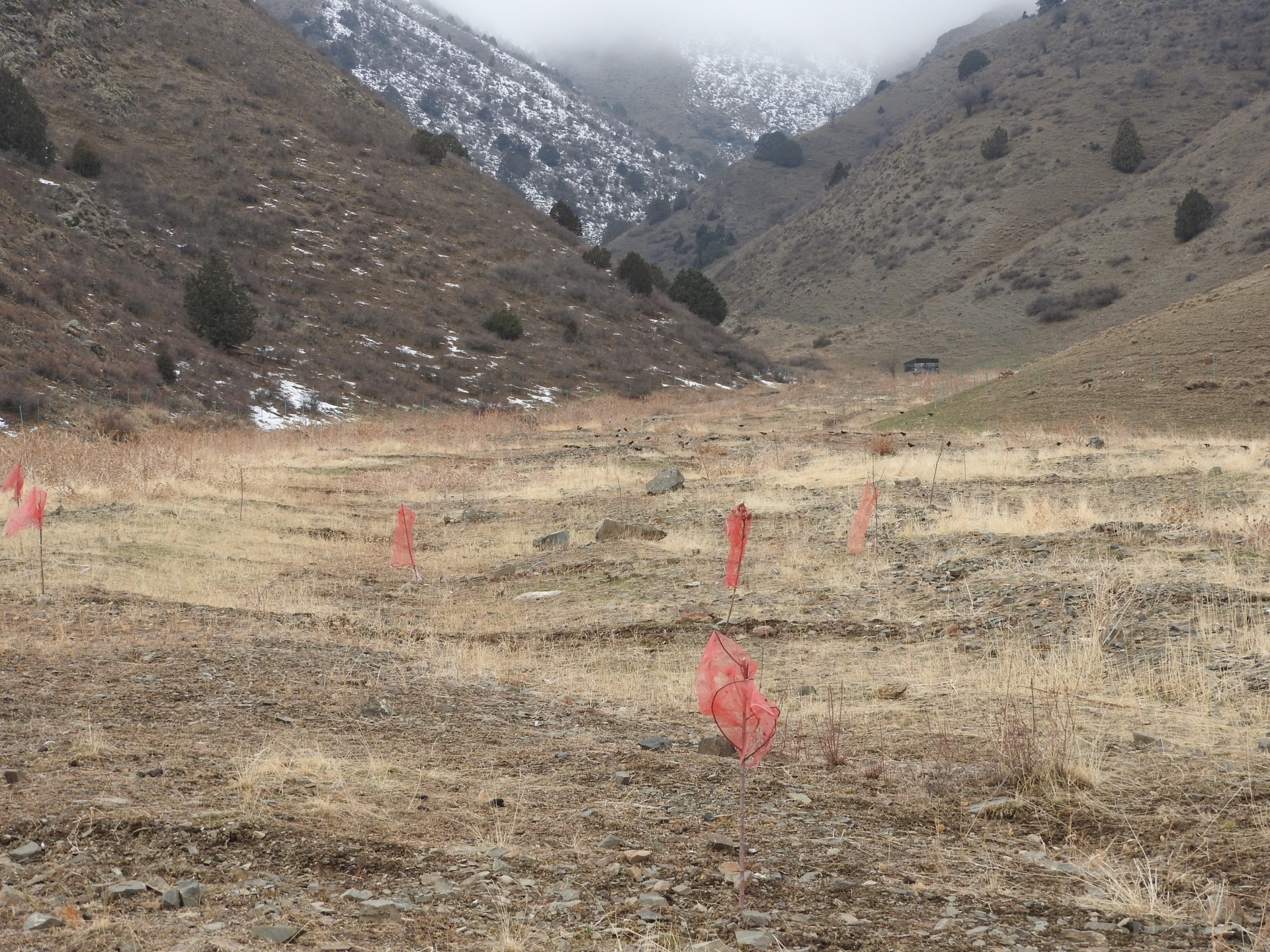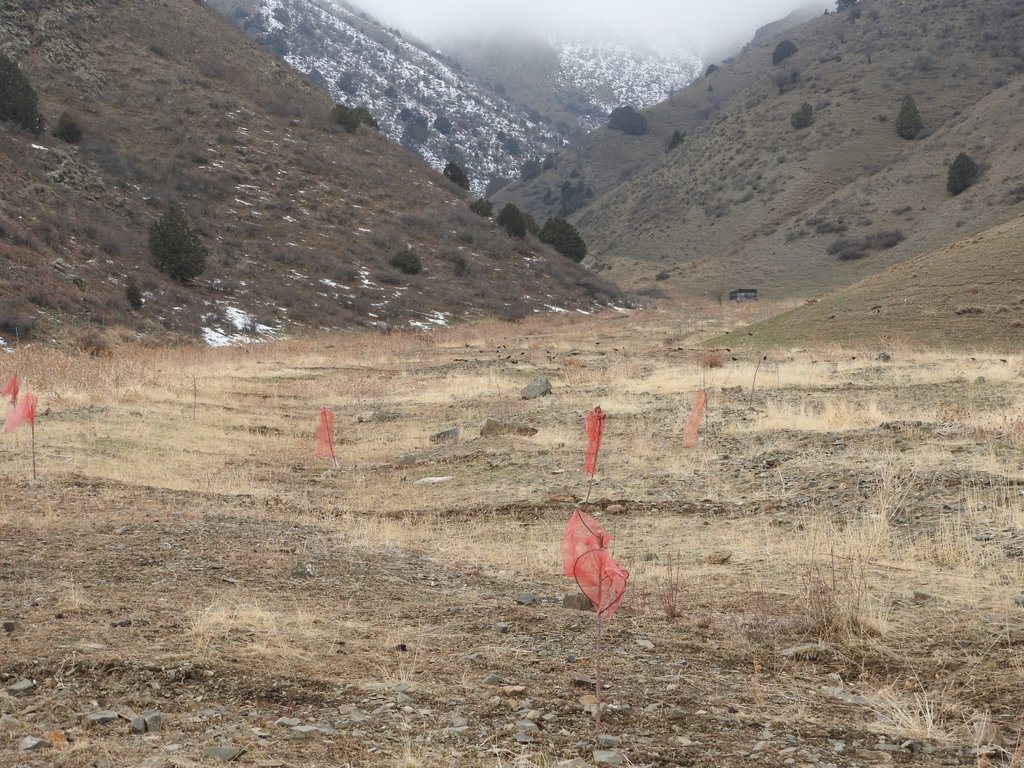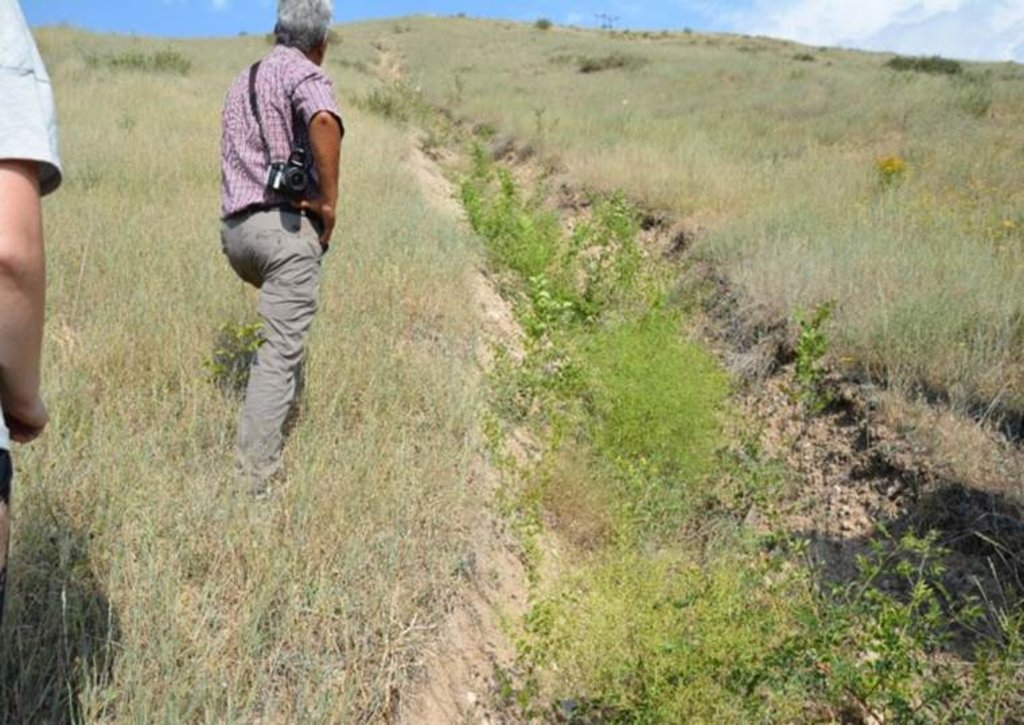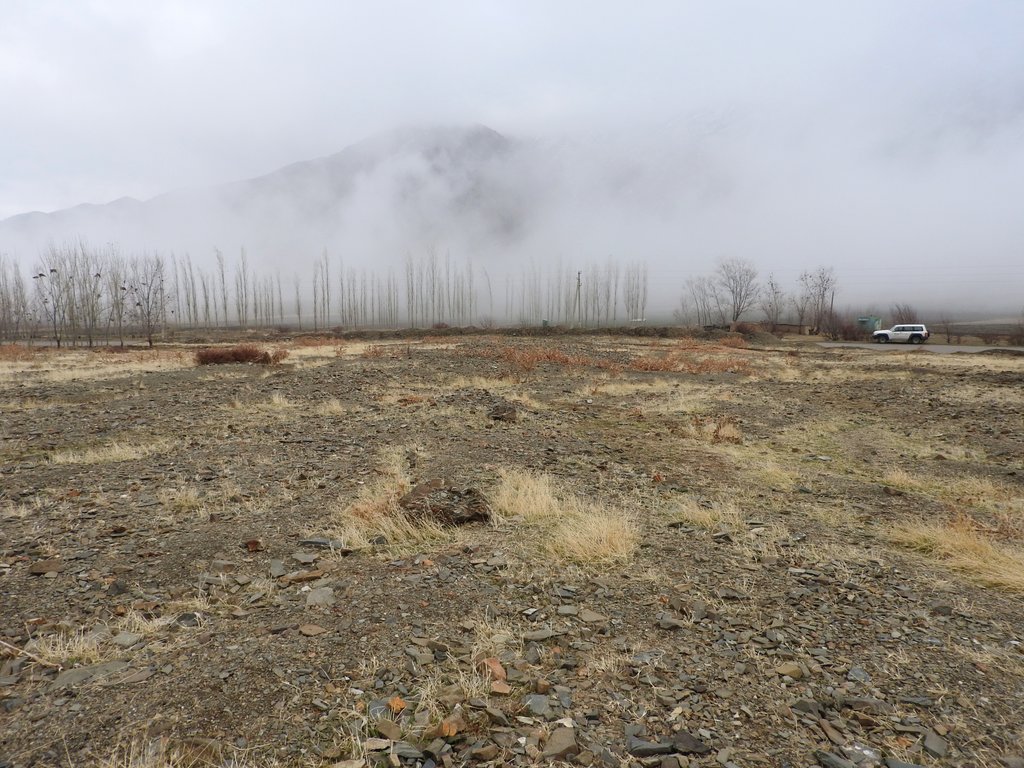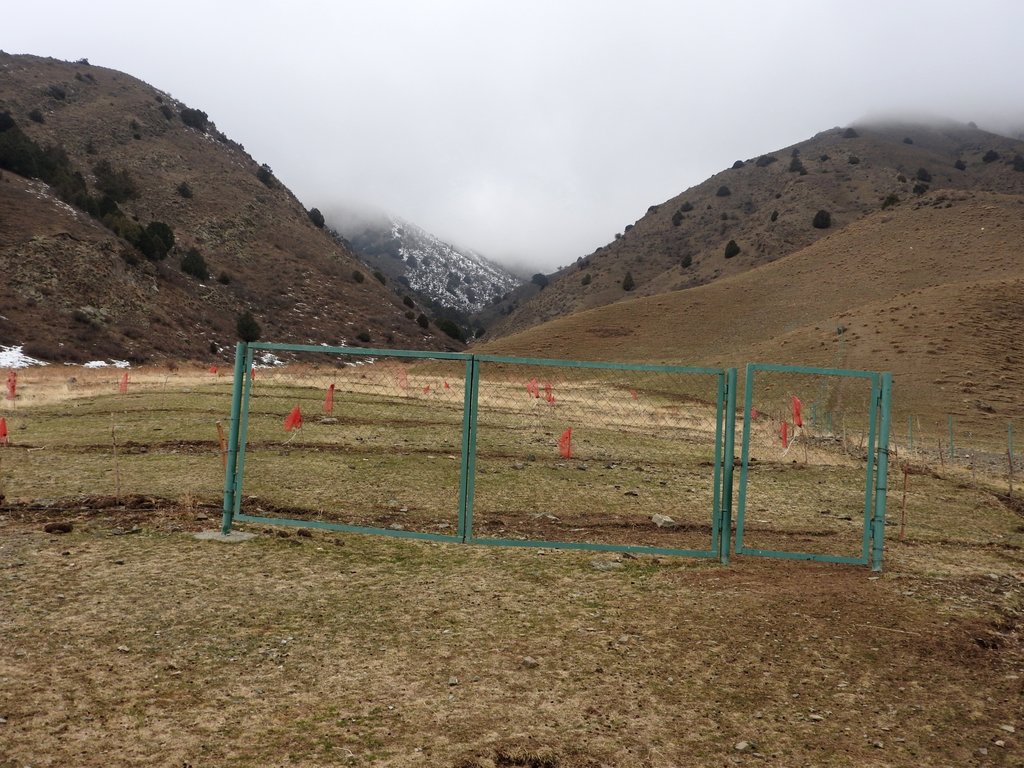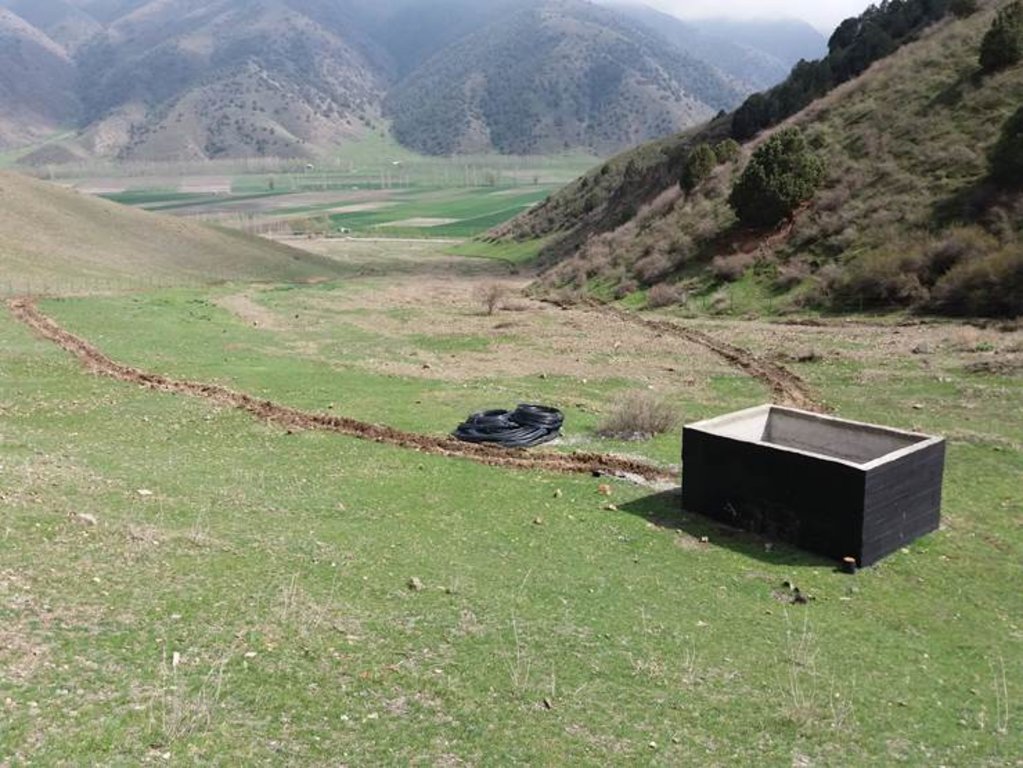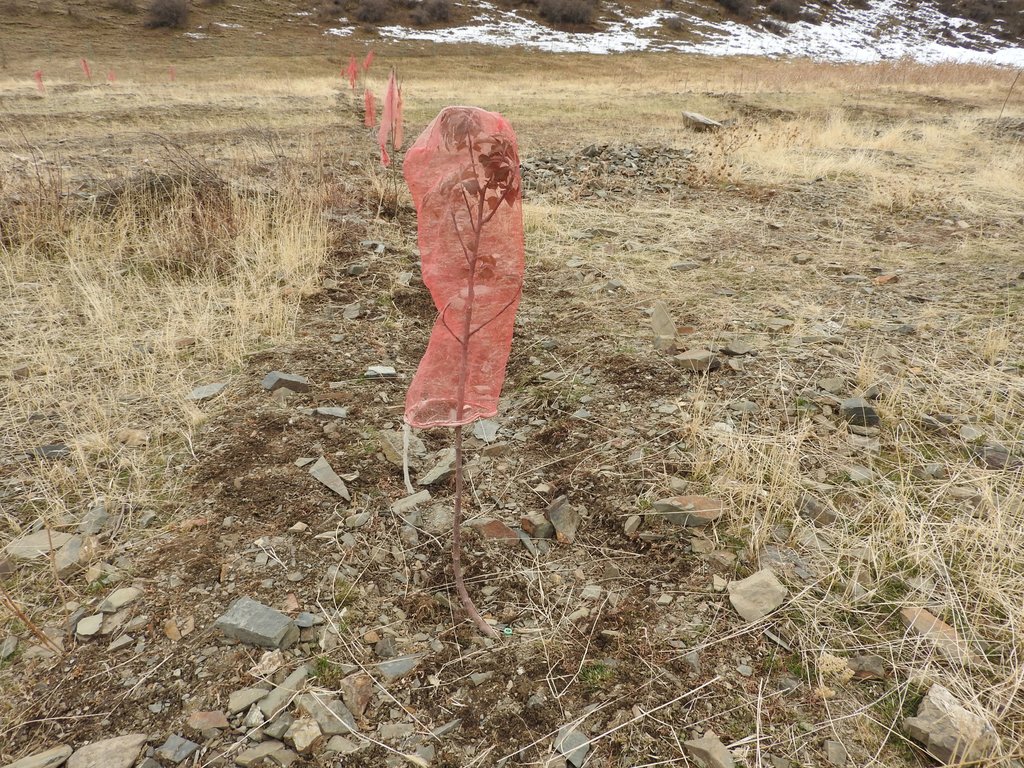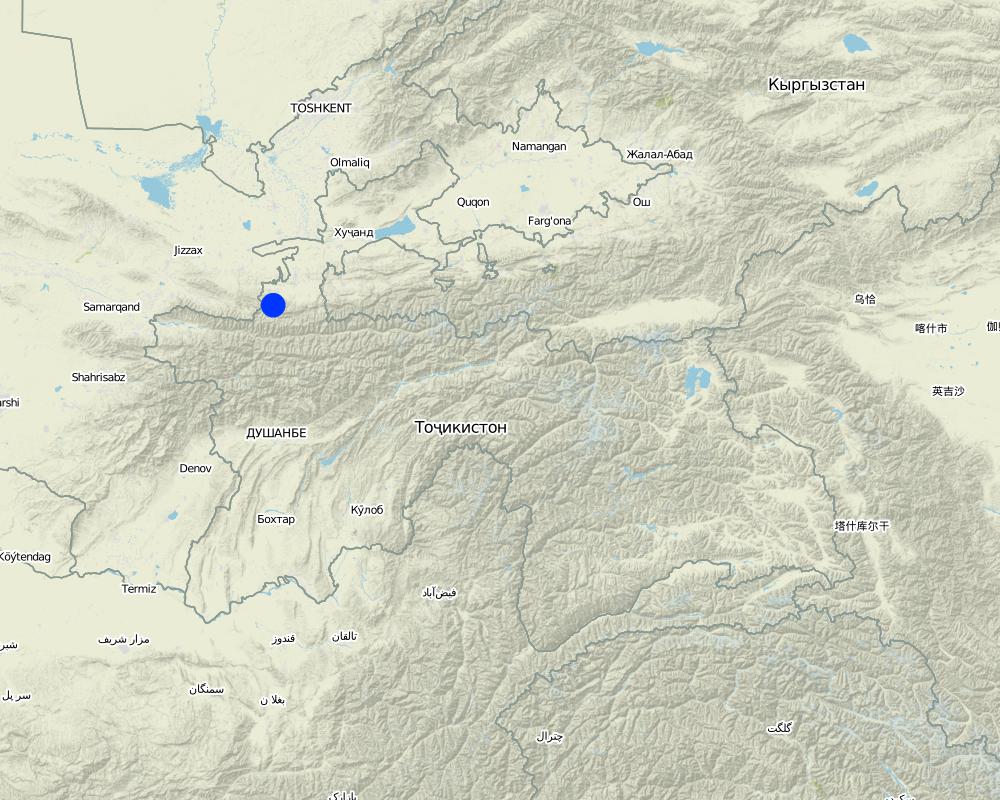Disaster risk reduction and sustainable land-use by integrated rehabilitation of flashflood/debris flow affected site [Tajiquistão]
- Criação:
- Atualização:
- Compilador/a: Stefan Michel
- Editor: –
- Revisor: Umed Vahobov
Снижение риска стихийных бедствий и устойчивое землепользование через интегрированное восстановление местности разрушенного селевым потоком
approaches_4320 - Tajiquistão
Veja as seções
Expandir tudo Recolher tudo1. Informação geral
1.2 Detalhes do contato das pessoas capacitadas e instituições envolvidas na avaliação e documentação da abordagem
Pessoa(s) capacitada(s)
Especialista em GST:
Muhidinov Nodir
nodir.sfl@gmail.com
Deutsche Gesellschaft für Internationale Zusammenarbeit (GIZ)
Tajiquistão
Especialista em GST:
Negmatov Negmatjon
negmatdzhon.negmatov@giz.de
Deutsche Gesellschaft für Internationale Zusammenarbeit (GIZ)
Tajiquistão
Nome do projeto que facilitou a documentação/avaliação da Abordagem (se relevante)
Strengthening of Livelihoods through Climate Change Adaptation in Kyrgyzstan and TajikistanNome da(s) instituição(ões) que facilitou(ram) a documentação/avaliação da Abordagem (se relevante)
Deutsche Gesellschaft für Internationale Zusammenarbeit - Tajikistan (GIZ Tajikistan) - Tajiquistão1.3 Condições em relação ao uso da informação documentada através de WOCAT
O compilador e a(s) pessoa(s) capacitada(s) aceitam as condições relativas ao uso de dados documentados através do WOCAT:
Sim
1.4 Referência ao(s) questionário(s) sobre tecnologias da GST
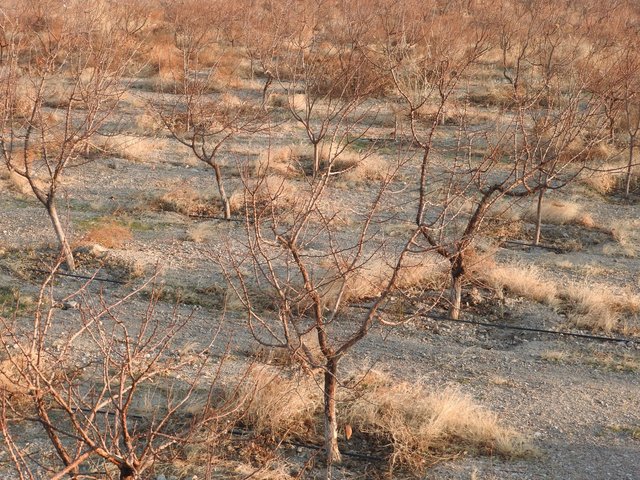
Applying drip irrigation for efficient irrigation water use … [Tajiquistão]
Drip irrigation substantially saves water compared to conventional furrow irrigation. Here the technology is applied for different perennial and annual crops and with use of different sources of water.
- Compilador/a: Stefan Michel
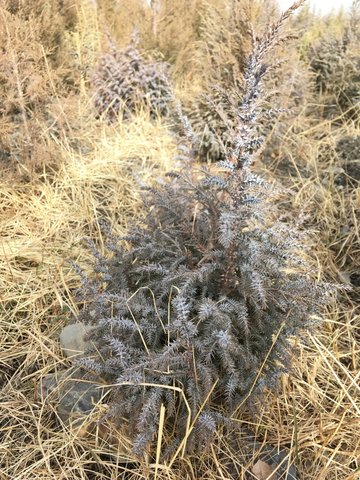
Cultivation of local juniper species for rehabilitation of … [Tajiquistão]
The local species of juniper trees (Juniperus seravschanica, Juniperus turkestanica and Juniperus semiglobosa) are rarely rejuvenating under conditions of intensive grazing and are difficult to propagate in nurseries. The technology describes the propagation of these important trees from locally collected seeds and their cultivation.
- Compilador/a: Stefan Michel
2. Descrição da abordagem de GST
2.1 Descrição curta da abordagem
A site affected by a debris flow was rehabilitated by joint communal work and integrated preventive measures addressing the upper catchment as well as the valley and the debris conus were implemented in collaboration of community, individual farmers, Committee of Emergency Situations and forestry enterprise.
2.2 Descrição detalhada da abordagem
Descrição detalhada da abordagem:
Local people in many parts of Tajikistan, among these the project region at the northern main slope of the Turkestan range, report about formerly unknown flashfloods and debris flows, even in areas where such events are not remembered. Also relief, soil and vegetation often confirm that such sites for long times had not been transformed by these forces. The occurrence of flashfloods and debris flows in formerly not affected areas, unusual seasons or an increase in frequency and destructiveness of such events can be attributed to land degradation in upper catchment areas in combination with climate change impact.
The degradation of the vegetation in upper catchments has contributed to reduced infiltration of water and high and fast surface runoff. Important elements of this degradation are overgrazing and deforestation. Overgrazing and out of season grazing cause the reduction of the protective plant cover and the multiple trails of livestock with compressed soil reduce infiltration and increase the surface runoff. Deforestation is typically related to intensive livestock grazing, in particular by goats, as intensive browsing prevents the regeneration of shrub and tree vegetation. In upper catchments affected by these processes during heavy rainfall and snow melt large amounts of water concentrate in small valleys and take with them large amounts of soil and gravel. The deforestation in valleys contributes to the intensity of such flashfloods and debris flows.
The frequency and intensity of these events is increasingly exacerbated by the impact of climate change. The already visible trends and predictions show higher levels of aridity, higher temperatures during the vegetation season, reduced overall precipitation in catchment areas – all affecting the retention potential of upper catchment areas – and more irregular rainfall patterns, reduced snow packs and accelerated snow melt as well as the loss of glaciers as buffers of water flow. These factors all contribute to a higher frequency and intensity of flashflood and debris flows and their occurrence in previously not or less affected areas.
Near the village Shamoli in Shakhriston district, as in many other locations, such a debris flow made a road impassable and has destroyed pasture lands and five hectares of arable lands belonging to several farmers with another 10 ha being at risk in case such events occur again. Local people assisted by the Committee of Emergency Situations opened and cleaned the road. The developed in collaboration with experts an integrated approach for rehabilitating the affected lands and reducing the disaster risk. The approach included the following elements:
•Blocking of gullies with planting of willows for reducing sediment load in case of future flashfloods;
•Agreement with the forestry enterprise about general regulation of grazing and tree planting (specifics to be decided by the forestry enterprise);
•Joint communal work (hashar) for cleaning affected arable lands from debris;
•Fencing of 4 ha lands in the valley leased by one farmer from the forestry enterprise for rehabilitation of protective vegetation and sustainable land use (orchard and hay making);
•Construction of reservoir for water collection from spring and use for drip irrigation of trees planted at the debris conus in the opening of the valley.
The approach brought together the Committee of Emergency Situations, the administrative communities, affected local people and the forestry enterprise. Assisted by experts provided by the project, the situation was jointly analyzed; risks identified and the integrated intervention planned. The project assisted with technical planning, construction supervision, purchase and transportation of construction materials. The community contributed about 30% of the overall costs, mainly in form of voluntary communal work, the so called hashar. One farmer leased the most critical area at the opening of the valley and took the responsibility for the maintenance of the area in exchange for the opportunity to use hay and fruits from the planted trees.
The approach is generally replicable. But in most such sites the upper catchment areas belong to different communities, often to different districts and substantial parts are located in neighboring Kyrgyzstan. Therefore addressing the degradation of these areas and a reduction of disaster risk through integrated watershed management in the entire catchments will require more collaboration across administrative boundaries and even national borders.
2.3 Fotos da abordagem
2.5 País/região/locais onde a abordagem foi aplicada
País:
Tajiquistão
Região/Estado/Província:
Sughd region
Especificação adicional de localização:
Shahriston district; Shahriston sub-district, Shamoli site
Map
×2.6 Datas de início e término da abordagem
Indique o ano de início:
2017
Caso o ano exato seja desconhecido, indique a data aproximada de início da abordagem:
menos de 10 anos atrás (recentemente)
2.7 Tipo de abordagem
- Baseado em projeto/programa
2.8 Principais metas/objetivos da abordagem
Rehabilitation of land affected by debris flow and reduction of risk of future events.
2.9 Condição que propiciam ou inibem a implementação de tecnologia/tecnologias aplicada(s) segundo a abordagem
Disponibilidade/acesso a recursos e serviços financeiros
- Inibitivo
For complex measures the financial assistance by the project was needed.
Quadro institucional
- Propício
Communal work for addressing issues affecting the entire community or individual members.
Colaboração/coordenção de atores
- Propício
Collaboration between community members, community leadership, Committee for Emergency Situations and forestry enterprise.
Conhecimento sobre GST, acesso a suporte técnico
- Inibitivo
Understanding of SLM issues insufficient, involvement of external experts needed.
Carga de trabalho, disponibilidade de força de trabalho
- Propício
Communal work for addressing issues affecting the entire community or individual members.
3. Participação e papel das partes interessadas envolvidas
3.1 Partes interessadas envolvidas na abordagem e seus papéis
- Usuários de terra/comunidades locais
Individual farmers and local community
Discussion of rehabilitation and prevention measures;
Implementation of works;
Maintencance of site with protection plantation.
- Especialistas em GST/ consultor agrícola
Experts provided by GIZ
Advise on disaster risk reduction, blocking of gullies, planting of trees, drip irrigation.
- Governo local
Community administration, Committee of Emergency Situations, forestry enterprise
Identification of risk sites;
Design, planning and supervision of interventions;
Lease of intervention site;
Regulation of grazing and tree planting in upper catchment.
- Organização internacional
Deutsche Gesellschaft für Internationale Zusammenarbeit (GIZ)
Overall project implementation;
Technical planning and oversight;
Procurement of construction materials via competitive bidding process
Caso várias partes interessadas foram envolvidas, indique a agência líder:
Deutsche Gesellschaft für Internationale Zusammenarbeit (GIZ)
3.2 Envolvimento do usuários de terra/comunidades locais nas diferentes fases da abordagem
| Envolvimento do usuários de terra/comunidades locais | Especifique quem estava envolvido e descreva as atividades | |
|---|---|---|
| Iniciação/motivação | Participativo | Local community members, asking community leadership and GIZ staff for assistance to address impact of debris flow |
| Planejamento | Participativo | Involvement of community members in planning |
| Implementação | Local community members carrying out works through traditional voluntary community work ("hashar"). | |
| Monitoramento/avaliação | Local farmer maintaining the planted area controls condition of irrigation system and trees. | |
| maintenance | Local farmer maintaining the planted area. |
3.4 Decisão sobre a seleção de tecnologia/tecnologias de GST
Especifique quem decidiu sobre a seleção de tecnologia/tecnologias a serem implementadas:
- todos os atores relevantes, como parte de uma abordagem participativa
Especifique em que base foram tomadas as decisões:
- Avaliação de conhecimento bem documentado de GST (tomada de decisão baseada em evidências)
- Experiência pessoal e opiniões (não documentado)
4. Suporte técnico, reforço das capacidades e gestão do conhecimento
4.1 Reforço das capacidades/formação
Foi oferecida formação aos usuários da terra/outras partes interessadas?
Não
4.2 Serviço de consultoria
Os usuários de terra têm acesso a um serviço de consultoria?
Sim
Descreva/comentários:
Not of specific relevance for this approach.
4.3 Fortalecimento da instituição (desenvolvimento organizacional)
As instituições foram fortalecidas ou estabelecidas através da abordagem?
- Sim, pouco
Especifique a que nível (níveis) as instituições foram fortalecidas ou estabelecidas:
- Local
Descreva instituição, papéis e responsabilidades, membros, etc.
Existing community institutions have been strengthened through joint successful implementation of the works and the need for further collaboration.
Especifique o tipo de apoio:
- Financeiro
- Reforço das capacidades/formação
- Equipamento
Dê mais detalhes:
Fencing, materials of irrigation system, technical advice.
4.4 Monitoramento e avaliação
Monitoramento e avaliação são partes da abordagem?
Sim
Caso afirmativo, esta documentação é destinada a ser utilizada para monitoramento e avaliação?
Não
4.5 Pesquisa
A pesquisa foi parte da abordagem?
Não
5. Financiamento e apoio material externo
5.1 Orçamento anual para o componente de GST da abordagem
Caso o orçamento exato seja desconhecido, indique a faixa:
- 2.000-10.000
Comentários (p. ex. principais fontes de recursos/principais doadores):
Government of Germany, implemented via Deutsche Gesellschaft für Internationale Zusammenarbeit (GIZ). The approach has been implemented in the frame of a much larger program and the specific budget for the SLM component of the Approach cannot be determined.
5.2 Apoio financeiro/material concedido aos usuários da terra
Os usuários da terra receberam apoio financeiro/material para a implementação de tecnologia/tecnologias?
Sim
Caso afirmativo, especifique tipo(s) de apoio, condições e fornecedor(es):
Technical planning and supervision, procurement of materials and transportation funded by GIZ.
5.3 Subsídios para entradas específicas (incluindo mão-de-obra)
- Nenhum
Se a mão-de-obra pelos usuários da terra foi uma entrada substancial, isso foi:
- Voluntário
5.4 Crédito
Foi concedido crédito segundo a abordagem para atividades de GST?
Não
5.5 Outros incentivos ou instrumentos
Foram utilizados outros incentivos ou instrumentos para promover a implementação das tecnologias de GST?
Sim
Caso afirmativo, especifique:
The farmer managing the site in the valley, where trees have been planted, can use the fruits and the hay produced from the site. This is the key incentive for him to carry out all maintenance.
6. Análise de impactos e declarações finais
6.1 Impactos da abordagem
A abordagem concedeu autonomia aos usuários locais de terra, melhorou a participação das partes interessadas?
- Não
- Sim, pouco
- Sim, moderadamente
- Sim, significativamente
Mobilization for joint work to address problems affecting all farmers/community members
A abordagem auxiliou os usuários da terra a implementar e manter as tecnologias de GST?
- Não
- Sim, pouco
- Sim, moderadamente
- Sim, significativamente
Integration of different technologies to rehabilitate lands and reduce future disaster risk.
A abordagem melhorou a coordenação e a implementação economicamente eficiente da GST?
- Não
- Sim, pouco
- Sim, moderadamente
- Sim, significativamente
Collaboration between land users, community leadership, Committee of Emergency Situations and forestry enterprise.
A abordagem mobilizou/melhorou o acesso aos recursos financeiros para implementação da GST?
- Não
- Sim, pouco
- Sim, moderadamente
- Sim, significativamente
Mobilization of financial resources from GIZ.
A abordagem aprimorou o conhecimento e as capacidades dos usuários da terra para implementar a GST?
- Não
- Sim, pouco
- Sim, moderadamente
- Sim, significativamente
Knowledge of and skills to implement several technologies for land rehabilitation, sustainable land use and disaster risk reduction.
A abordagem construiu/fortaleceu instituições, colaboração entre partes interessadas?
- Não
- Sim, pouco
- Sim, moderadamente
- Sim, significativamente
Collaboration between land users, community leadership, Committee of Emergency Situations and forestry enterprise.
A abordagem melhorou as questões de posse de terra/diretos do usuário que inibiam a implementação das tecnologias de GST?
- Não
- Sim, pouco
- Sim, moderadamente
- Sim, significativamente
Lease of critical site to motivated farmer by forestry enterprise.
A abordagem resultou em segurança alimentar aprimorada/nutrição melhorada?
- Não
- Sim, pouco
- Sim, moderadamente
- Sim, significativamente
Rehabilitation of affected farmlands and reduced disaster risk.
A abordagem aprimorou a capacidade dos usuários da terra de adaptar-se a mudanças climáticas/extremos e atenuar os desastres relacionados com o clima?
- Não
- Sim, pouco
- Sim, moderadamente
- Sim, significativamente
Reduced risk of disasters, which increase due to climate change.
6.2 Principal motivação dos usuários da terra para implementar a GST
- Produção aumentada
Fruits and hay from rehabilitated critical site.
- Riscos de desastre reduzido
Reduced risk of disasters, which increase due to climate change and threaten productive lands and property.
6.3 Atividades de sustentabilidade de abordagem
Os usuários da terra podem manter o que foi implementado através da abordagem (sem apoio externo)?
- Sim
6.4 Pontos fortes/vantagens da abordagem
| Pontos fortes/vantagens/oportunidades na visão do usuário da terra |
|---|
| Rehabilitated lands and reduced risk. |
| Use of products from critical site, which was planted with fruit trees. |
| Pontos fortes/vantagens/oportunidades na visão do compilador ou de outra pessoa capacitada |
|---|
| Same as land users' view. |
| Mobilization of collaboration and joint communal work. |
6.5 Pontos fracos, desvantagens da tecnologia e formas de superá-los
| Pontos fracos/desvantagens/riscos na visão do usuário da terra | Como eles podem ser superados? |
|---|---|
| High costs of fencing | External funding. |
| High costs of irrigation system | External funding. |
| Pontos fracos/vantagens/riscos na visão do compilador ou de outra pessoa capacitada | Como eles podem ser superados? |
|---|---|
| High costs of fencing |
External funding; Cheaper temporary electric fencing; Approaches without fencing, based on agreement in the community to prevent livestock damage through herding. |
| High costs of irrigation system |
External funding; Planting of drought resistant trees. |
7. Referências e links
7.1 Métodos/fontes de informação
- visitas de campo, pesquisas de campo
- entrevistas com usuários de terras
- entrevistas com especialistas em GST
Links e módulos
Expandir tudo Recolher tudoLinks

Applying drip irrigation for efficient irrigation water use … [Tajiquistão]
Drip irrigation substantially saves water compared to conventional furrow irrigation. Here the technology is applied for different perennial and annual crops and with use of different sources of water.
- Compilador/a: Stefan Michel

Cultivation of local juniper species for rehabilitation of … [Tajiquistão]
The local species of juniper trees (Juniperus seravschanica, Juniperus turkestanica and Juniperus semiglobosa) are rarely rejuvenating under conditions of intensive grazing and are difficult to propagate in nurseries. The technology describes the propagation of these important trees from locally collected seeds and their cultivation.
- Compilador/a: Stefan Michel
Módulos
Não há módulos


